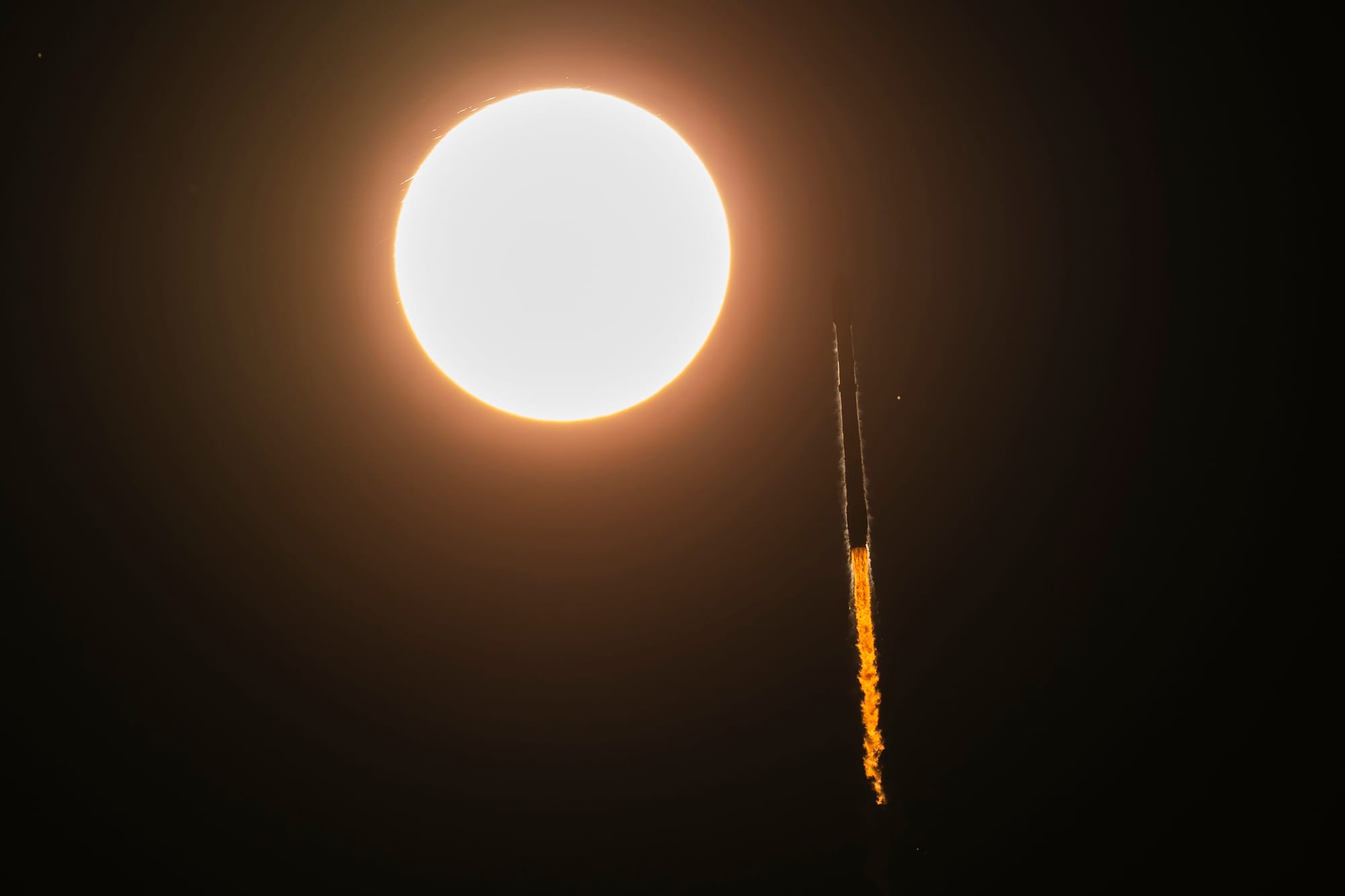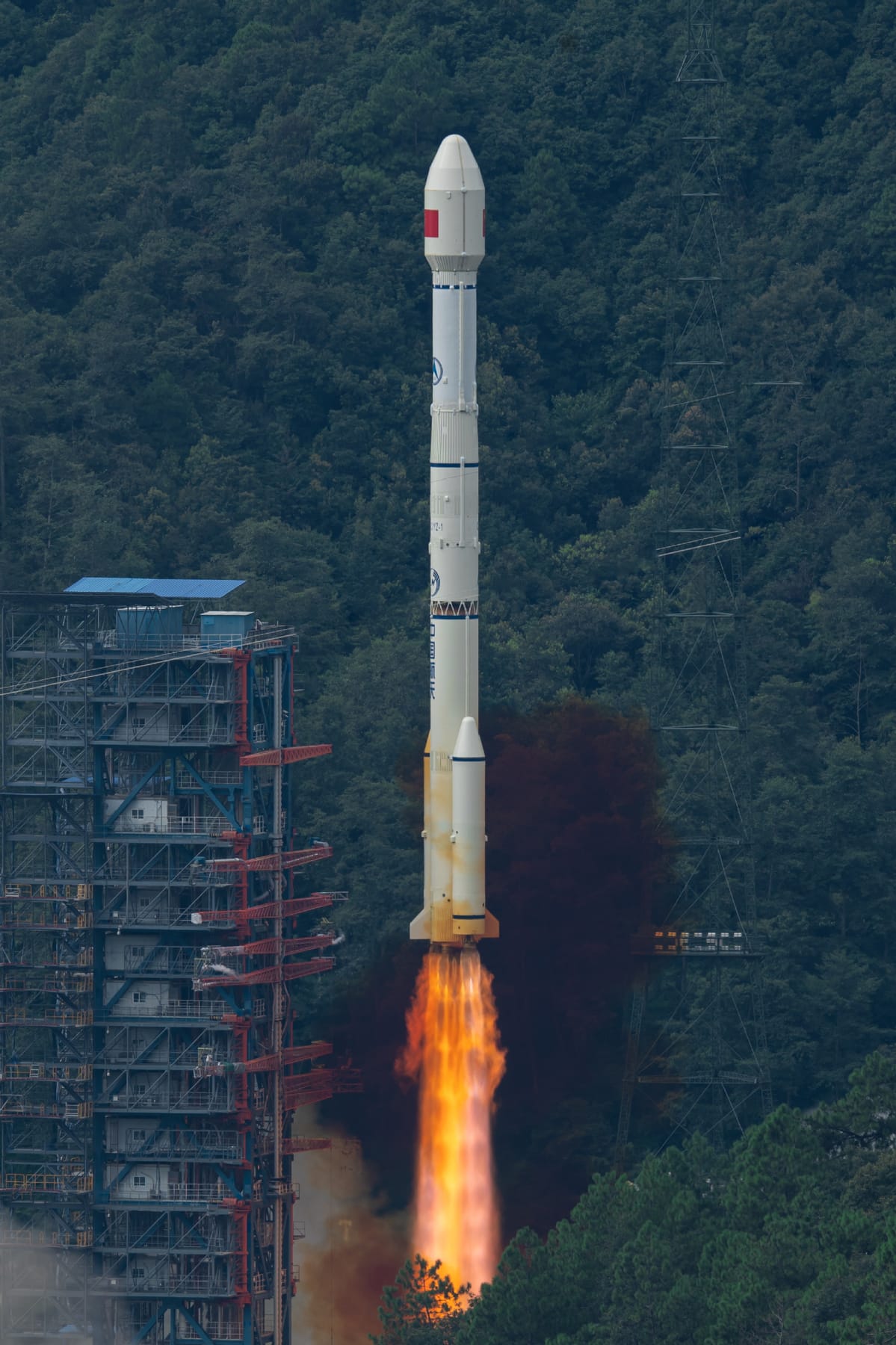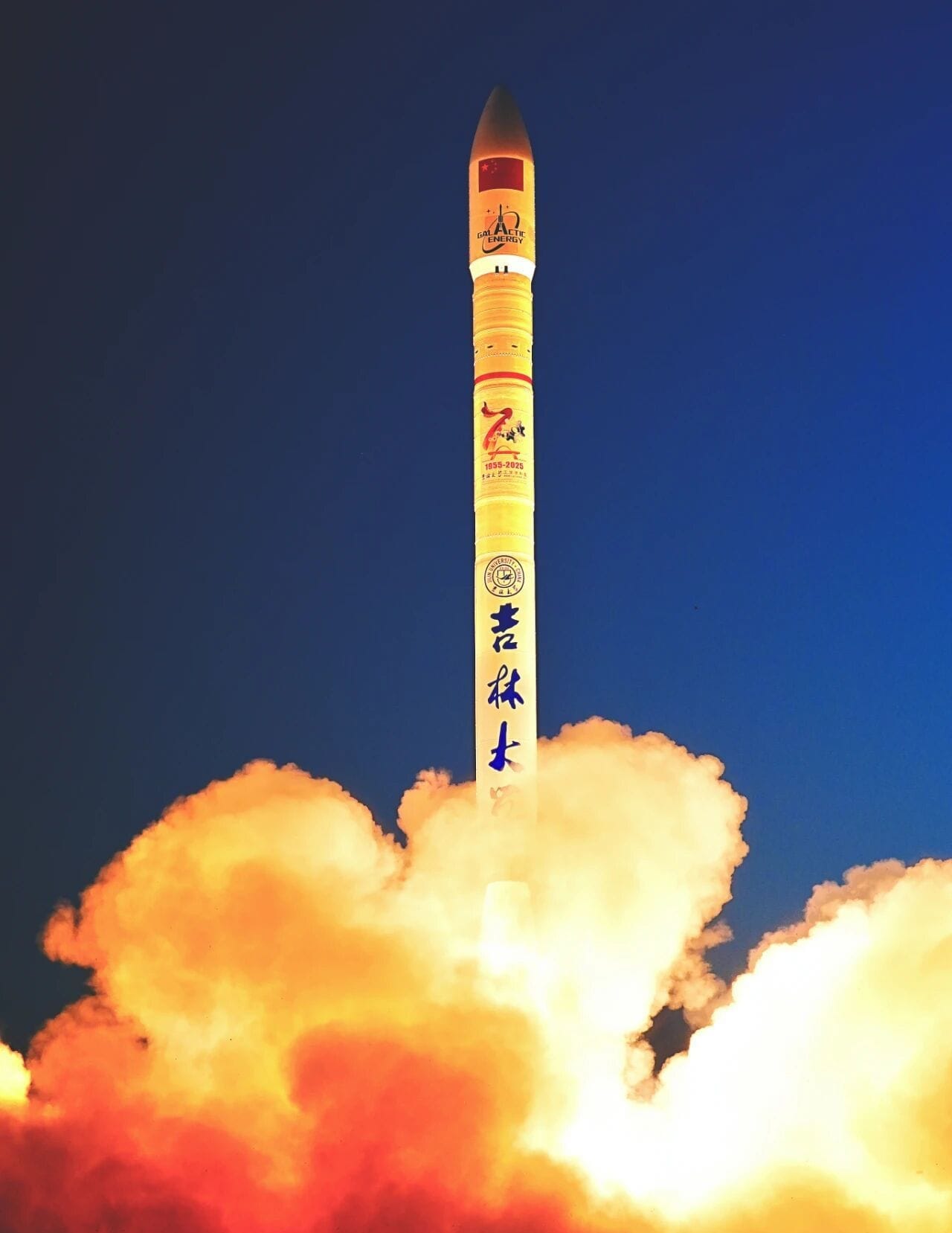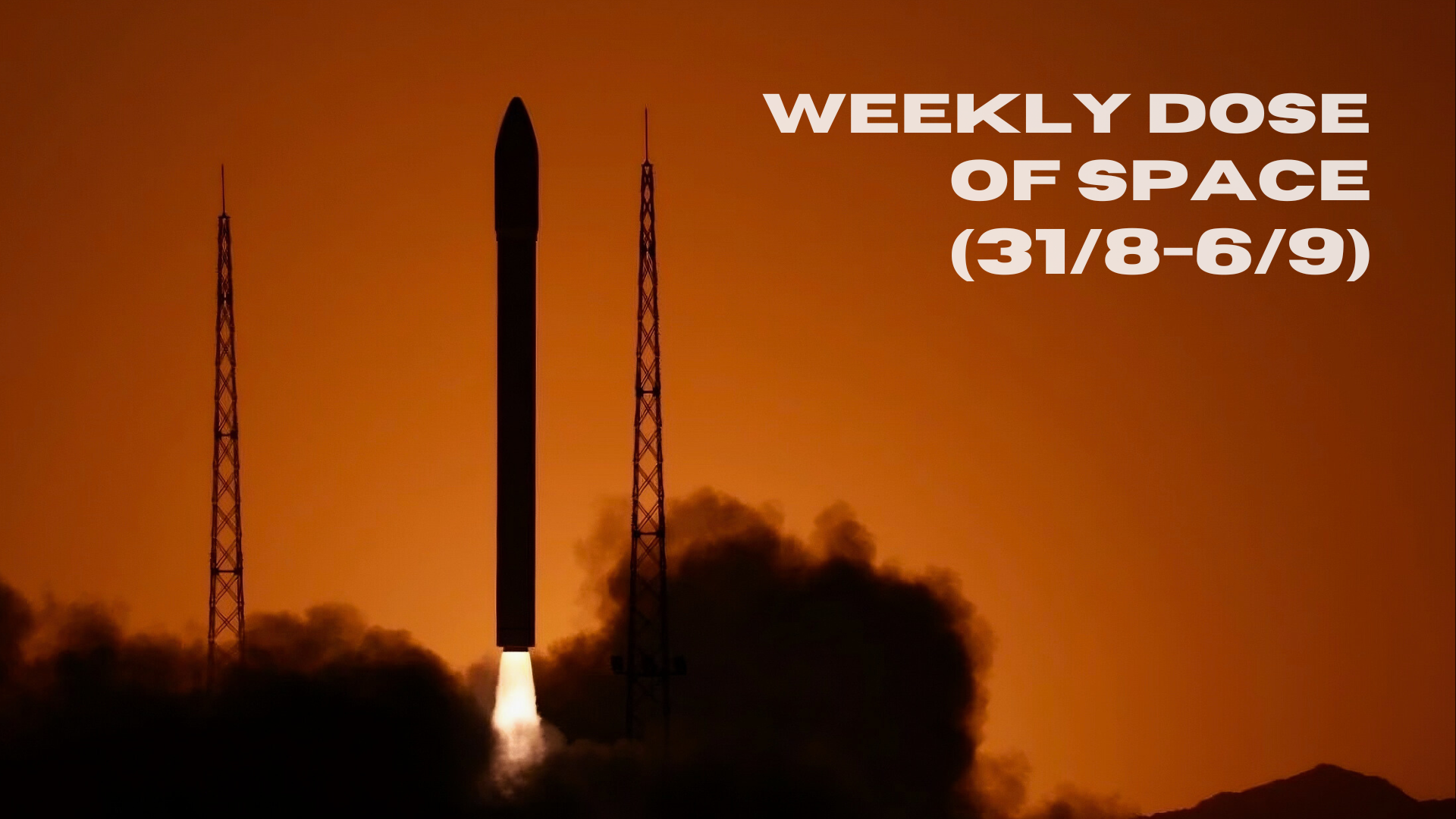Table of Contents
Welcome back to Weekly Dose of Space! This week saw nine launches taking place, with spacecraft sent into a variety of orbits. News during the week included a promotion at NASA, the initiation of a future planetary defense mission, and a boost for the International Space Station. As always, we'll also look ahead to what the worldwide launch schedule might look like next week.
Launches This Week
August 31st - Falcon 9 with Starlink Group 10-14
SpaceX's Falcon 9 launched twenty-eight Starlink satellites to low Earth orbit from Space Launch Complex 40, in Florida. Supporting this launch was booster B1077, for its twenty-third flight, with a landing downrange on the drone ship 'Just Read The Instructions'.

September 2nd - Shavit-2 with Ofek-19
Israel's military launched a Shavit-2 rocket, based on the country's intercontinental ballistic missiles, into a retrograde low Earth orbit carrying the Ofek-19 satellite. Ofek-19 is believed to be a synthetic aperture radar reconnaissance satellite.
September 3rd - Falcon 9 with Starlink Group 17-8
Twenty-four Starlink satellites were sent to low Earth orbit via a Falcon 9 flying from Space Launch Complex 4E, in California. Booster B1097 supported this mission for its first flight, landing on the drone ship 'Of Course I Still Love You' downrange.

September 3rd - Falcon 9 with Starlink Group 10-22
Another twenty-eight Starlink satellites were delivered to low Earth orbit from Space Launch Complex 40 via a Falcon 9. Supporting this launch was booster B1083, for its fourteenth flight with a downrange landing on the drone ship 'A Shortfall of Gravitas'.

September 5th - Long March 3C/E with Shiyan-29
A Long March 3C/E carried Shiyan-29, boosted by a Yuanzheng-1 upper-stage, directly into geostationary orbit from the Xichang Satellite Launch Center for the rocket's second flight this year. Shiyan-29 is planning to conduct space environment monitoring the related technology tests.

September 5th - Ceres-1 with three satellites
Galactic Energy's Ceres-1 blasted off from the Jiuquan Satellite Launch Center carrying three customer satellites into sun-synchronous orbit, along with its Eros orbital test platform (based on the rocket's fourth-stage). The customer payloads were:
- Kaiyun-1, for Earth observation and space awareness tasks
- Yuxing-3-08, for remote sensing via a 5-meter resolution camera
- Yunyao-1-27, for meteorological tasks as well as testing an electric hall-effect propulsion system, a fiber optic gyro, a high-performance computer, and a Compton telescope for gamma-ray particle detection.
Meanwhile, the Eros platform is set to carry out experiments related to studying atmospheric conditions along with optical and visible light imaging tests.

September 5th - Falcon 9 with Starlink Group 10-57
Yet another twenty-eight Starlink satellites were sent to low Earth orbit by Falcon 9 flying out of Launch Complex 39A, in Florida. Booster B1069 supported this mission for its twenty-seventh flight, landing on the drone ship 'Just Read The Instructions' downrange.
This was also the 500th landing of a Falcon 9 first-stage booster.
Falcon 9 touchdown on the Just Read the Instructions droneship, completing the 500th launch and landing of an orbital class rocket pic.twitter.com/74hQehSIDd
— SpaceX (@SpaceX) September 5, 2025
Falcon 9 booster B1069 landing on 'Just Read The Instructions', via SpaceX on Twitter.
September 6th - Long March 6A with Yaogan-40 Group-03
Three Yaogan-40 satellites, for the third group overall, were sent into a polar orbit by a Long March 6A flying from the Taiyuan Satellite Launch Center. The three satellites are expected to perform electromagnetic environment detection over areas of Earth below, along with related technology tests.

September 6th - Falcon 9 with Starlink Group 17-9
Another Falcon 9 delivered twenty-four Starlink satellites to low Earth orbit, out of Space Launch Complex 4E. This mission was supported by booster B1075 for its twentieth flight, landing on the drone ship 'Of Course I Still Love You' downrange.
In Other Space News
Amit Kshatriya named associate administrator
NASA announced on September 3rd that Amit Kshatriya, previously the Deputy Associate Administrator for the Moon to Mars Program, has become the Associate Administrator of the space agency. According to the agency, Kshatriya's promotion puts the Artemis program at the core of American exploration strategy under the Trump Administration. Acting NASA Administrator Sean Duffy further underscored that by stating:
"Amit has spent more than two decades as a dedicated public servant at NASA, working to advance American leadership in space. Under his leadership, the agency will chart a bold vision to return to the Moon during President Trump’s term," – "Amit’s knowledge, integrity, and unwavering commitment to pioneering a new era of exploration make him uniquely qualified to lead our agency as associate administrator. With Amit we’ll continue to push the boundaries of what’s possible."
After making Kshatriya Associate Administrator, he and Sean Duffy appeared on an internal NASA town hall to repeat the point that agency leadership intends to ignore restored funding and win the 21st-century "Moon race", which the U.S. is the only participant of.
China to perform planetary defense mission
China Daily and CGTN are reporting that China is initiating a planetary defense mission project this year. According to Wu Weiren, the Chief Designer of China's highly successful Lunar Exploration Program and Director of the nation's Deep Space Exploration Laboratory, the defense mission will target a near-Earth asteroid and aim to move its orbit by three to five centimeters.
A mission to do so would use a fly-along–impact–fly-along architecture with two spacecraft, an observer and an impactor. An observer would arrive first to survey the target, then an impactor would hit at high speed, followed by the observer and Earth-based instruments measuring the results.
Alongside conducting a planetary defense mission, China also envisions establishing a comprehensive planetary defense architecture. That would see an integrated space-ground monitoring and alert network to enable an early warning system for potentially dangerous asteroids heading for the Earth or Moon, then followed by an in-orbit response.
At the moment, China is flying its first asteroid sample return mission, Tianwen-2, which is en route to asteroid 2016HO3/469219 Kamoʻoalewa, with a planned arrival in the summer of 2026, where it will gather between 200 and 1,000 grams of samples. Around 2029, those samples will be returned to Earth during a flyby.
Dragon boosts International Space Station
SpaceX's Cargo Dragon spacecraft, as part of the company's thirty-third resupply mission, provided a small boost to the International Space Station's orbit on September 3rd as part of a demonstration.
For the boost, two Draco engines in Dragon's trunk section fired for five minutes and three seconds, drawing propellant from a brand new boost kit (also in the trunk). After the boost, the space station was left in a 260.9 by 256.3 mile (around 420.0 by 412.5 kilometers) altitude orbit, raised by about a mile at the lowest point.
With the demonstration boost complete, additional burns from Dragon may take place to periodically maintain the International Space Station's orbit.
What to Expect Next Week
September 8th - Jielong-3 with Geely Group 05?
Geespace's Geely Future Mobility Constellation could see its fifth group of satellites, likely with eleven onboard, launched into low Earth orbit by a Jielong-3 from a floating sea-launch platform.
September 9th - Falcon 9 with Nusantara Lima
A Falcon 9 is planned to carry Indonesia's Nusantara Lima telecommunications satellite to a geostationary transfer orbit from Space Launch Complex 40.
September 9th - Long March 7A with a to-be-announced payload
From the Wenchang Space Launch Site, a Long March 7A is preparing to launch towards geostationary space, carrying a currently unknown spacecraft.
September 10th - Falcon 9 with a Tranche 1 mission
For the U.S. Space Development Agency, a Falcon 9 is expected to launch from Space Launch Complex 4E for the Tranche 1 Transport Layer B mission.
September 11th - Soyuz 2.1a with Progress MS-32
A Soyuz 2.1a is planned to launch the Progress MS-32 cargo resupply mission to the International Space Station from the Baikonur Cosmodrome.
September 13th - Soyuz 2.1b with a Glonass-K satellite
A Glonass-K satellite is set to head to medium Earth orbit via a Soyuz 2.1b flying from the Plesetsk Cosmodrome.







